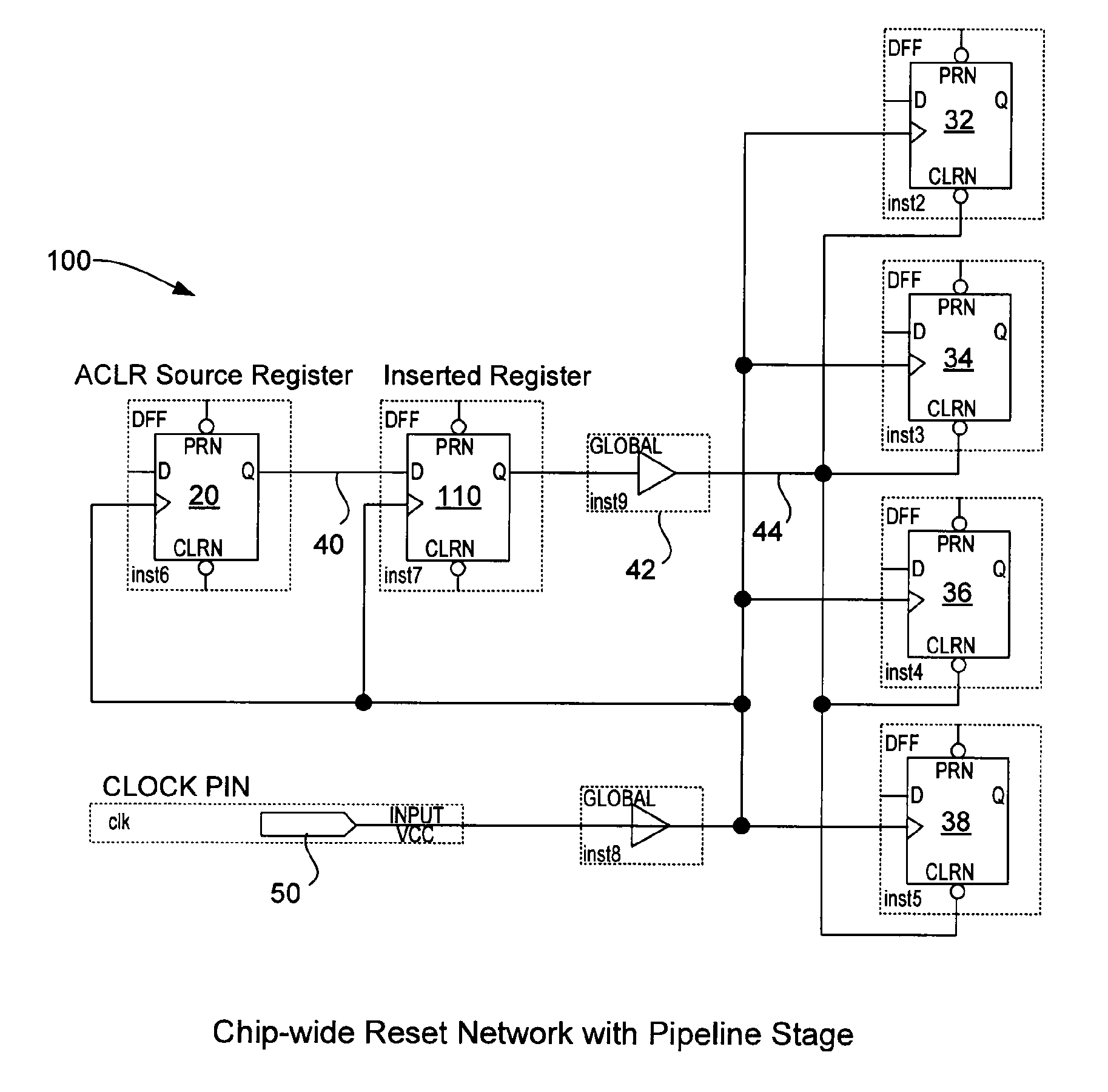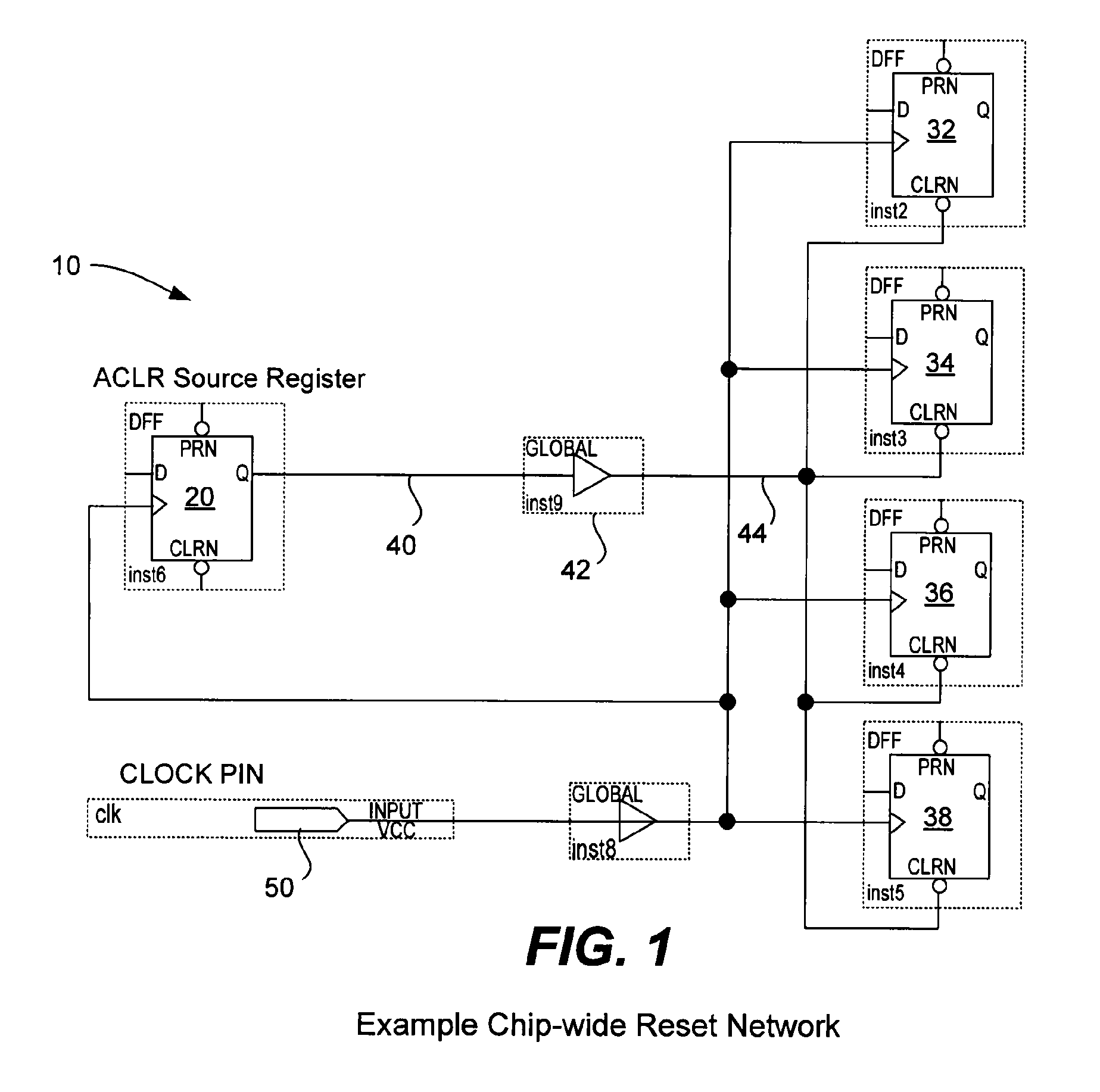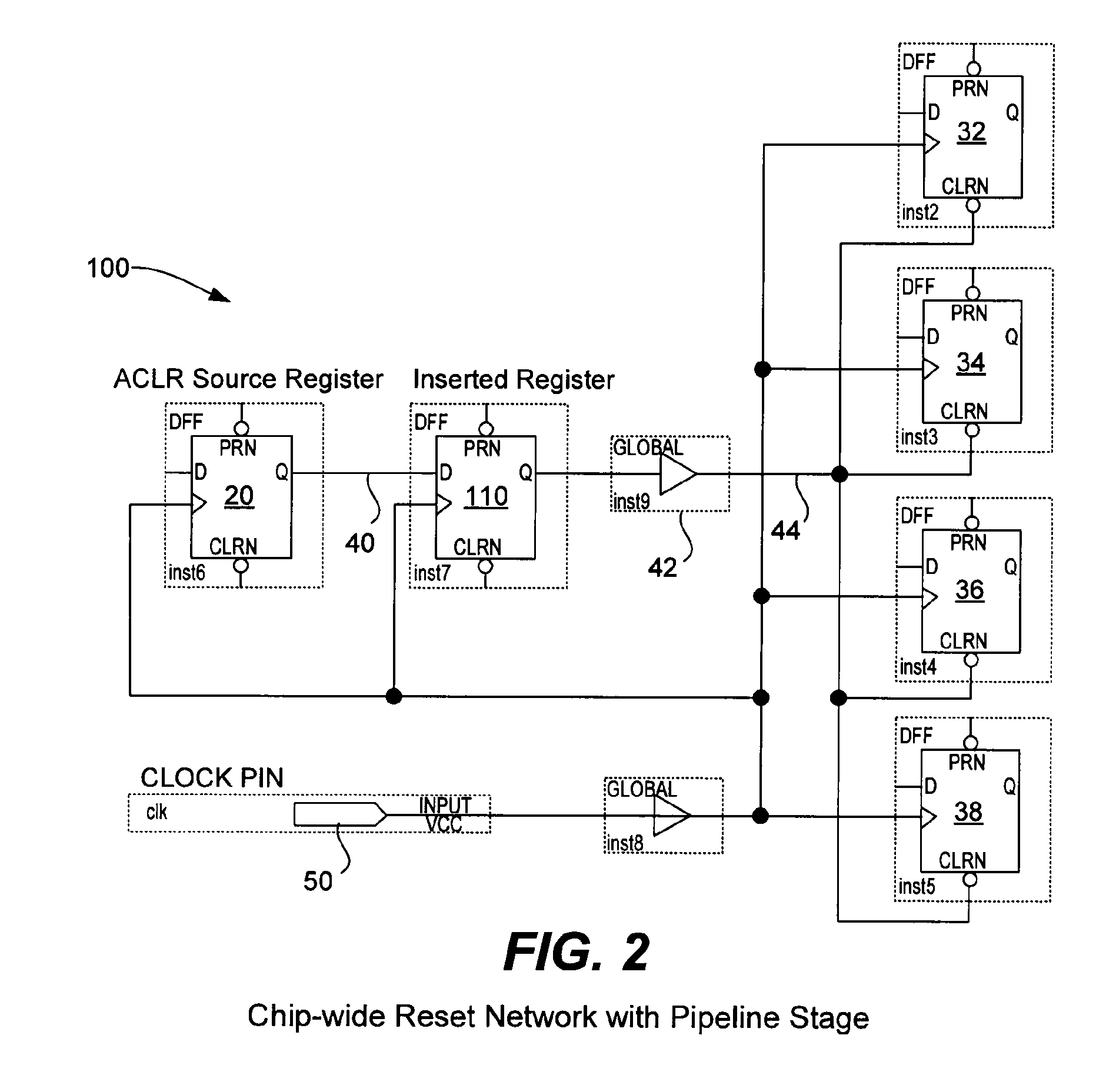Automatic asynchronous signal pipelining
a technology of automatic asynchronous signal and pipeline register, which is applied in the direction of cad circuit design, pulse technique, instruments, etc., can solve problems such as circuit timing failure, and achieve the effects of reducing the worst-case delay of a distribution network, faster timing, and network speed
- Summary
- Abstract
- Description
- Claims
- Application Information
AI Technical Summary
Benefits of technology
Problems solved by technology
Method used
Image
Examples
implementation example
Detailed Implementation Example
[0035]The following details assist the electronic design automation software in implementing the asynchronous signal pipelining technique described above by automatically altering the user's design to meet timing requirements. A number of high-level considerations are useful to keep in mind during implementation: 1) prefer algorithms that minimally perturb the user's design, 2) use intelligent optimization decisions given the logical equivalence of pipeline registers, and 3) ensure that all phases of the EDA tool are aware of the decisions made by the asynchronous signal pipelining technique. Electronic design automation software typically performs the steps of logic synthesis and fitting to compile a logic design. Fitting can include, but is not limited to, the following phases: 1) initial physical synthesis, 2) distribution network assignment, 3) placement, 4) post-placement physical synthesis, and 5) routing. Distribution network assignment is a pha...
PUM
 Login to View More
Login to View More Abstract
Description
Claims
Application Information
 Login to View More
Login to View More - R&D
- Intellectual Property
- Life Sciences
- Materials
- Tech Scout
- Unparalleled Data Quality
- Higher Quality Content
- 60% Fewer Hallucinations
Browse by: Latest US Patents, China's latest patents, Technical Efficacy Thesaurus, Application Domain, Technology Topic, Popular Technical Reports.
© 2025 PatSnap. All rights reserved.Legal|Privacy policy|Modern Slavery Act Transparency Statement|Sitemap|About US| Contact US: help@patsnap.com



